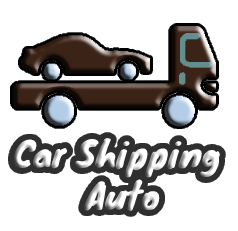This article aims to provide a detailed comparison of the costs involved in Roll-on/Roll-off (RoRo) shipping versus container shipping. Both are popular methods used globally to transport various goods over sea. Understanding their relative costs can help shippers and logistics professionals make informed decisions for different cargo types and transportation needs.
RoRo Shipping Cost Factors
RoRo ships are designed to carry wheeled cargo like trucks, trailers, cars and other motor vehicles. The cargo drives onto ramps at the ports and rolls aboard on its own wheels. This distinguishes RoRo shipping from container shipping where cargo needs to be packed into standard ISO containers that are then lifted onto and off the vessel.
Some key factors that influence the costs of RoRo shipping include:
- Vessel Type – Dedicated pure car and truck carriers are designed for maximum load efficiency of wheeled cargo with options like multiple car decks. This allows more cargo to be transported per voyage compared to multi-purpose RoRo vessels.
- Cargo Handling – As wheeled units can be driven aboard, cargo loading and unloading happens faster with RoRo and requires less heavy lifting equipment compared to container ships. This keeps handling costs lower.
- Cargo Types – Different wheeled cargo like cars have a lower volume-to-weight ratio than containerized general cargo. More units of autos can be transported than an equivalent weight of other goods.
- Route Length – Shorter distances reduce time at sea and corresponding fuel consumption. Many RoRo routes are domestic or between neighboring countries keeping route lengths optimal.
Container Shipping Cost Factors
In container shipping, cargo is packed into standard 20 or 40 foot ISO containers that serve as the basic building block. Shipping lines operate large container vessels designed specifically for efficient stacking of containers.
Cost drivers in container shipping include:
- Vessel Size – Larger container ships have lower unit costs but require specialized mega terminals. Slot capacity balancing cargo volume and arrival times impacts utilization and costs.
- Fuel Consumption – Longer ocean routes translate to higher bunker fuel needs. Container ships too have to balance speed and fuel efficiency based on port rotations.
- Cargo Types – Containerizable general cargo has advantages of mixed commodities in one box but incurs packing costs and takes more space than wheeled units.
- Ports of Call – More port calls increase costs while fewer calls result in longer hauls. Optimizing port rotations balances volume and operational efficiency.
- Empty Repositioning – Balancing loaded legs with empty legs back increases overall volume utilization while repositioning empties adds costs.
Cost Comparison of the Two Methods
To summarize the overall cost profiles of the two shipping methods:
| Factor | RoRo Shipping Costs | Container Shipping Costs |
| Vessel Design | Dedicated and optimized designs keep costs low | Specialized designs add complexity and costs |
| Cargo Handling | Faster drive-on loading cuts port time and labor needs | Container handling requires heavy equipment and labor |
| Route Length | Shorter distances preferred keeping costs manageable | Long haul routes necessitate bigger vessels and fuel |
| Cargo Type | Wheeled units use ship capacity efficiently | Mixed cargo leads to unused space despite full payload |
In summary, for shorter distances and regional trades carryingwheeled units, RoRo transport comes at acompratively lower cost. However, container shippingallows consolidation of mixed global trade at economies of scale,leading to lower unit costs for longer transoceanicroutes.
Container Shipping – Conclusion
Both RoRo and container shipping are vitally important in today’sglobalized supply chains. Understanding their inherent strengths andweaknesses in handling different cargo types over varied routes assistsshippers, carriers and other stakeholders to employ the optimalmethod based on transportation needs, commodity characteristics andoveralllowest total delivered cost.
